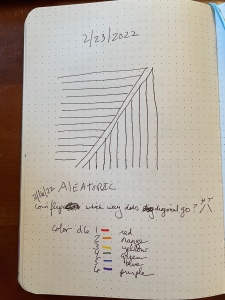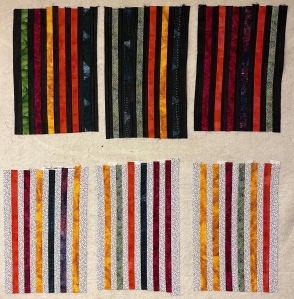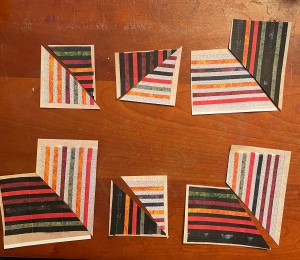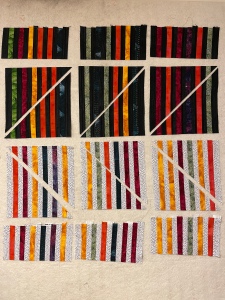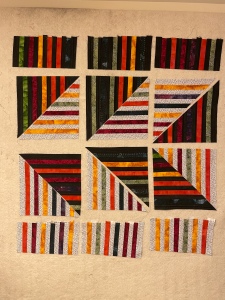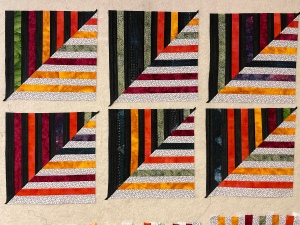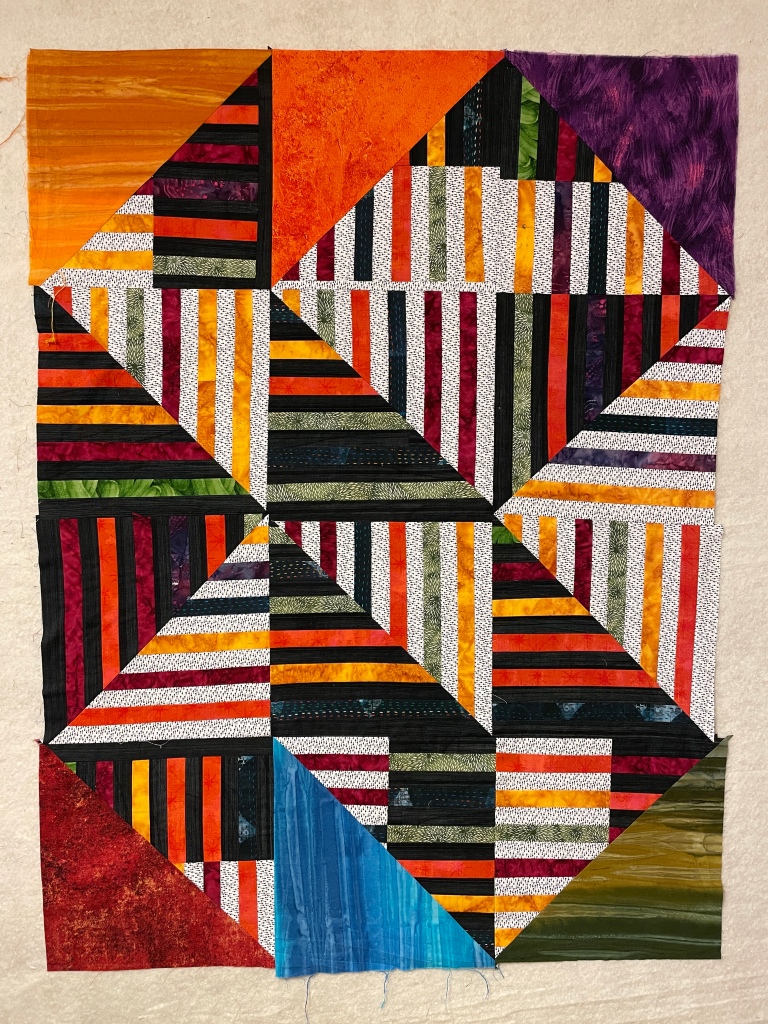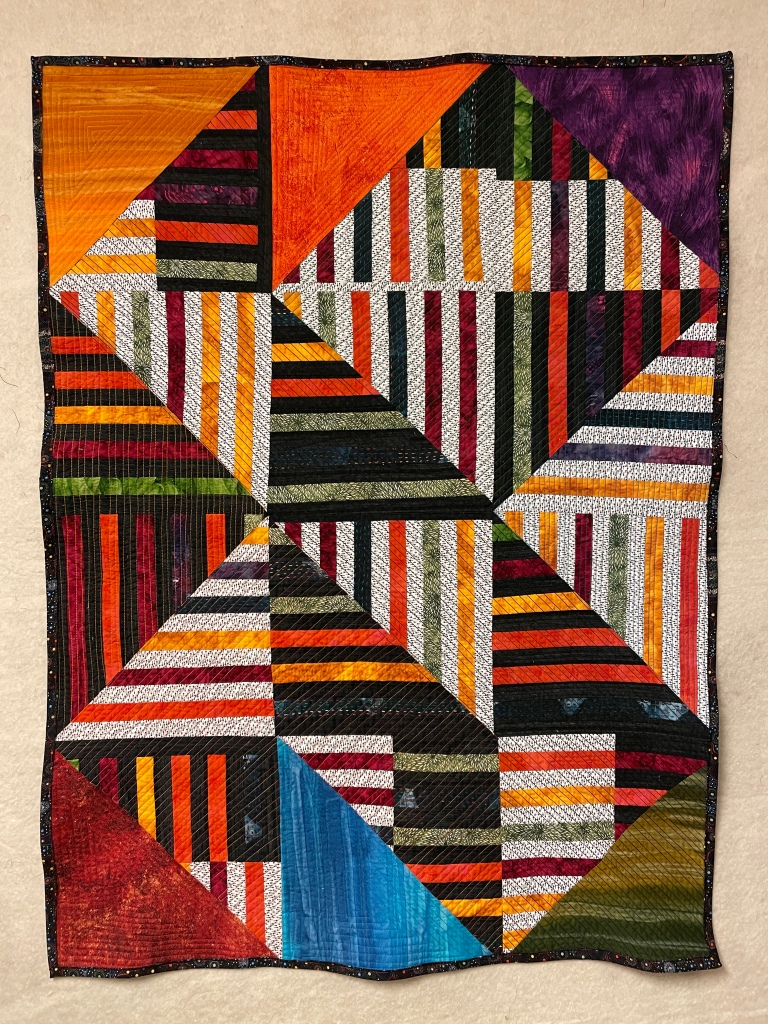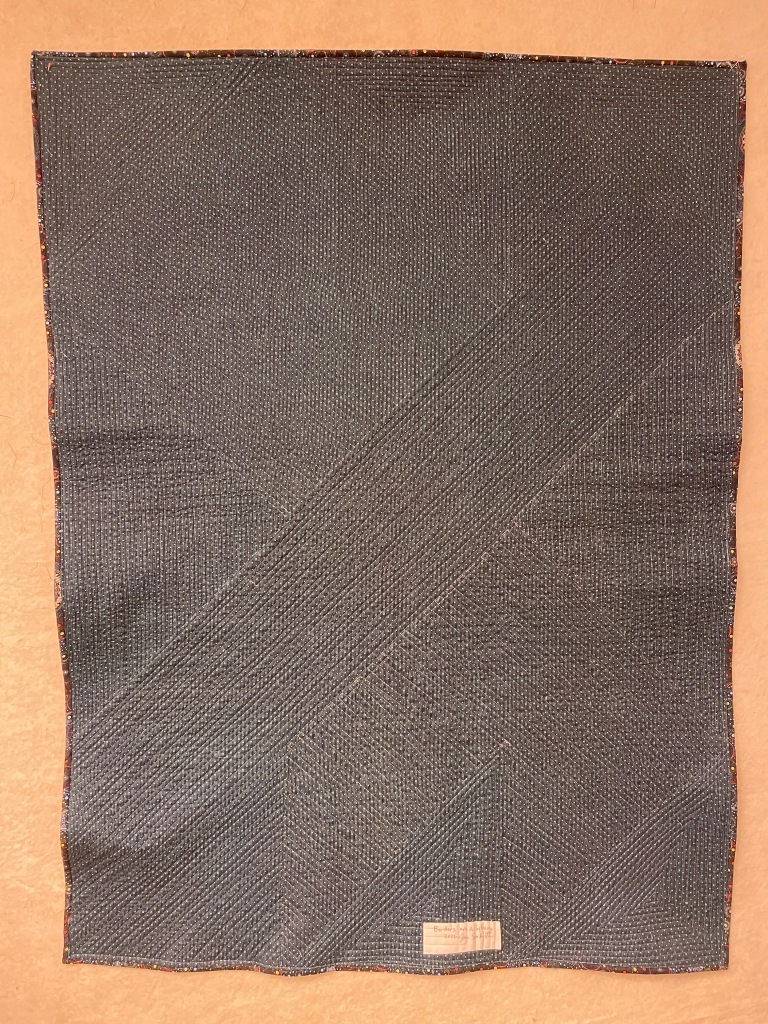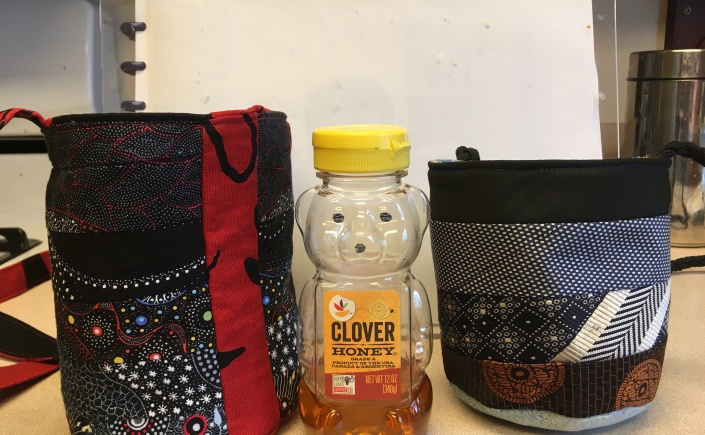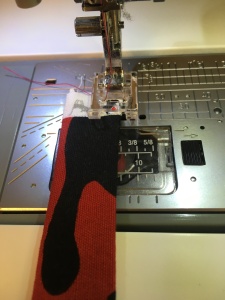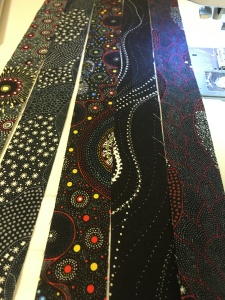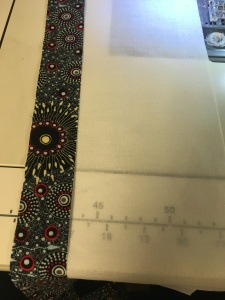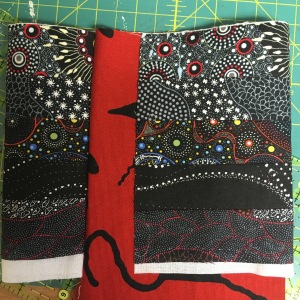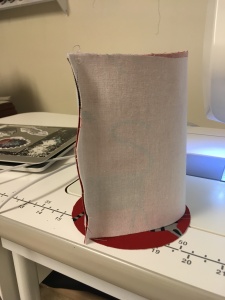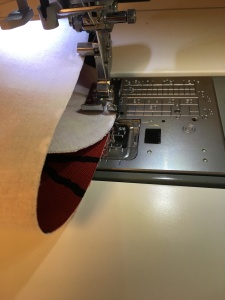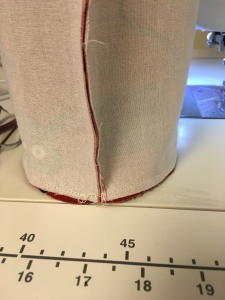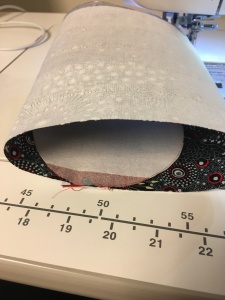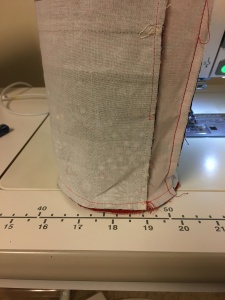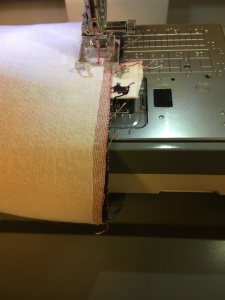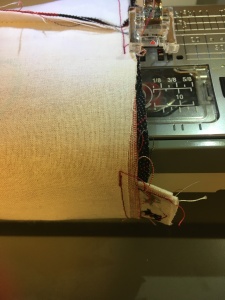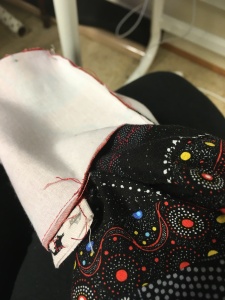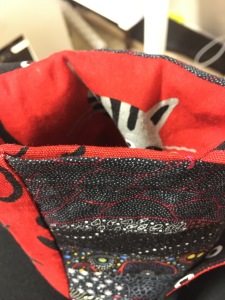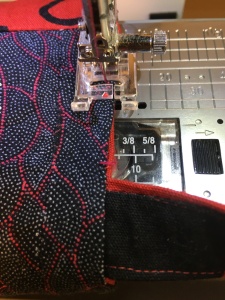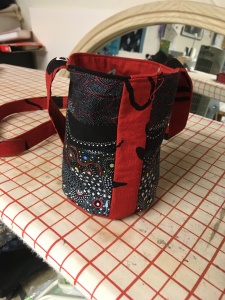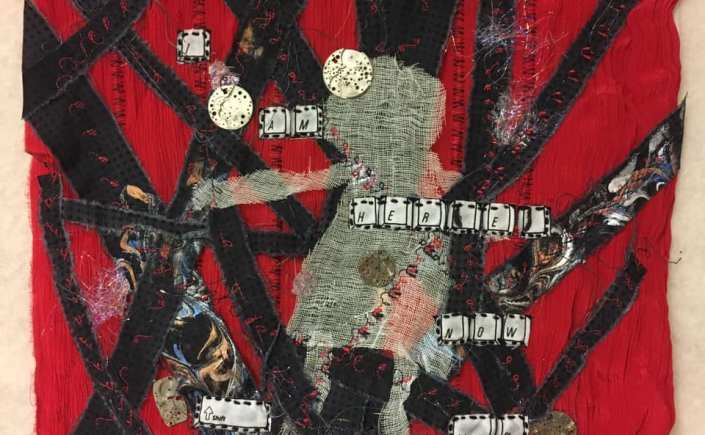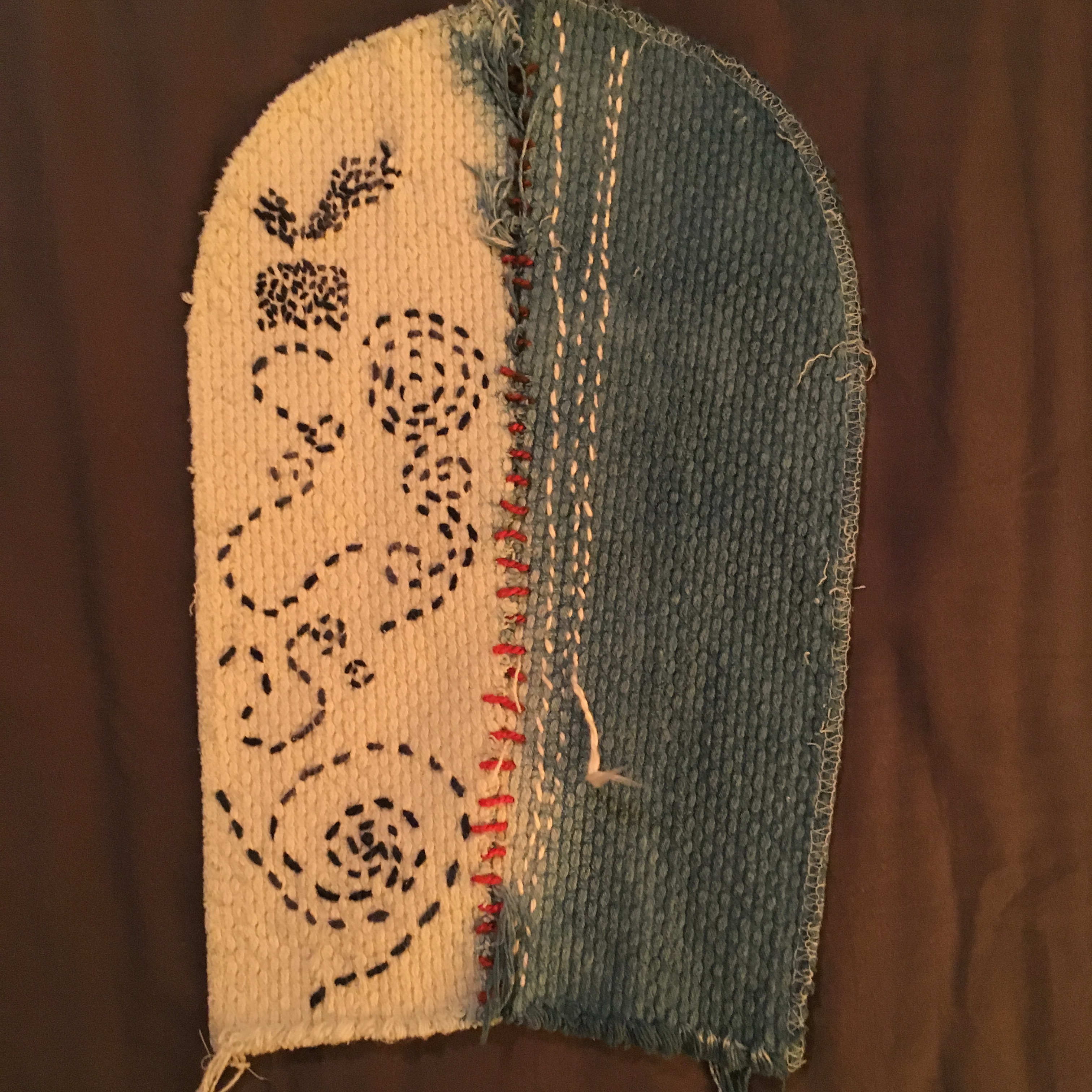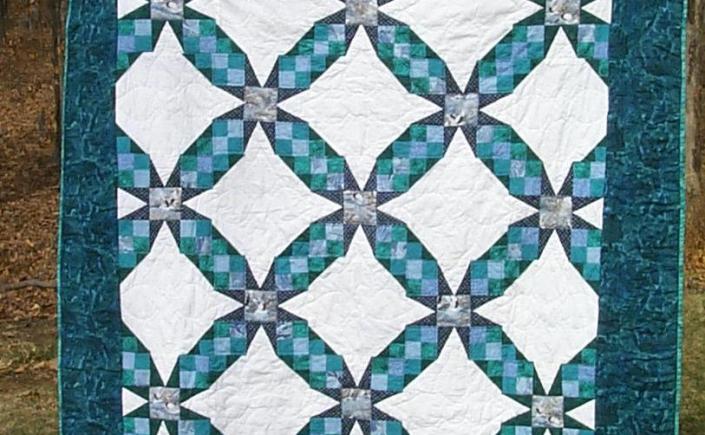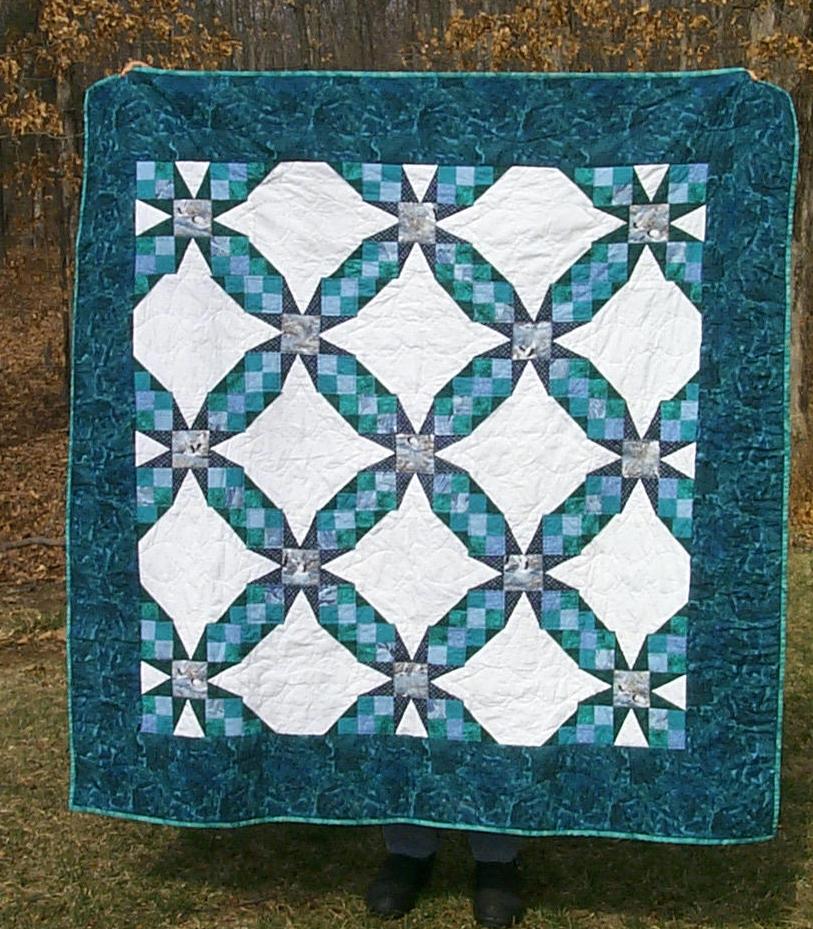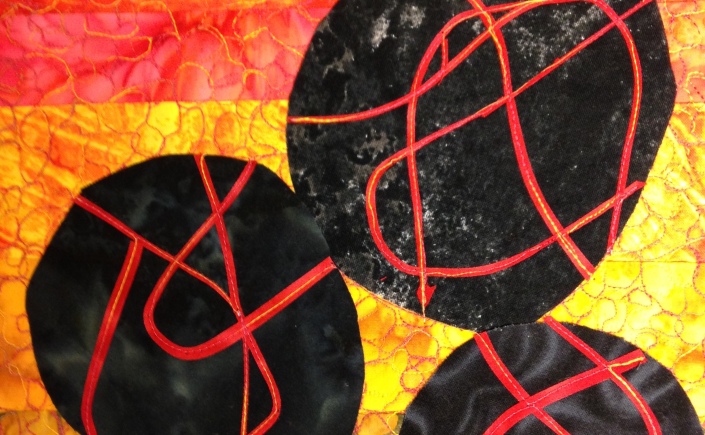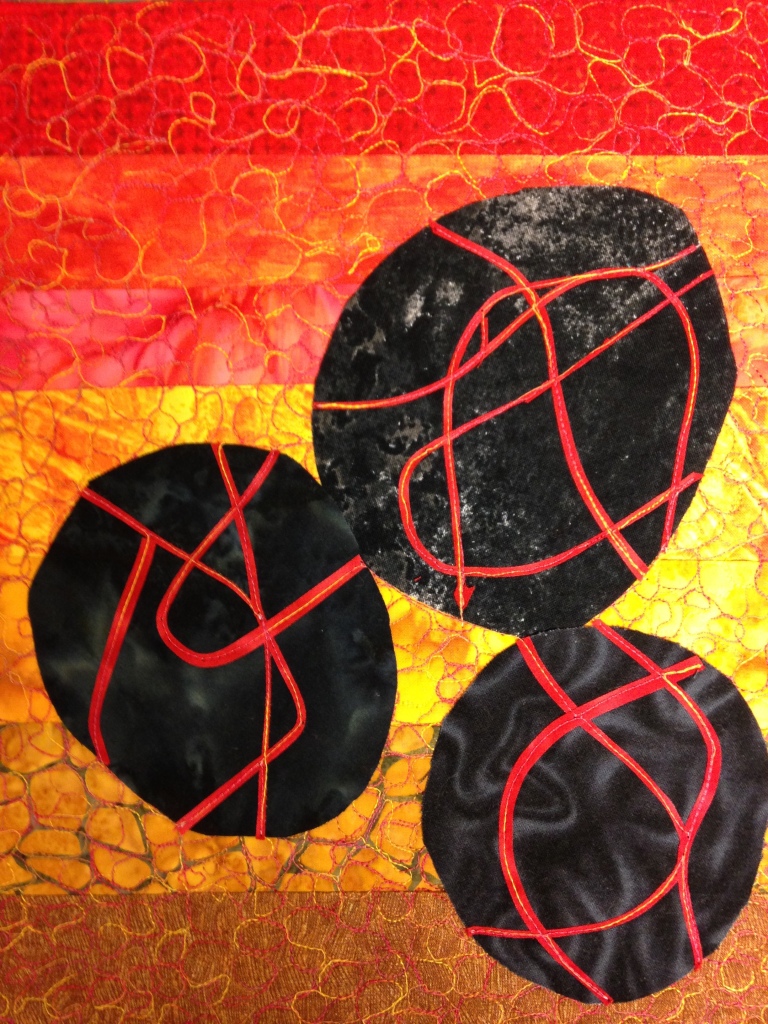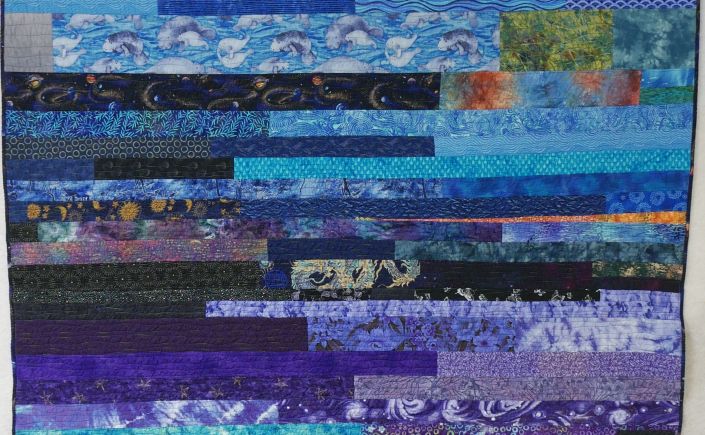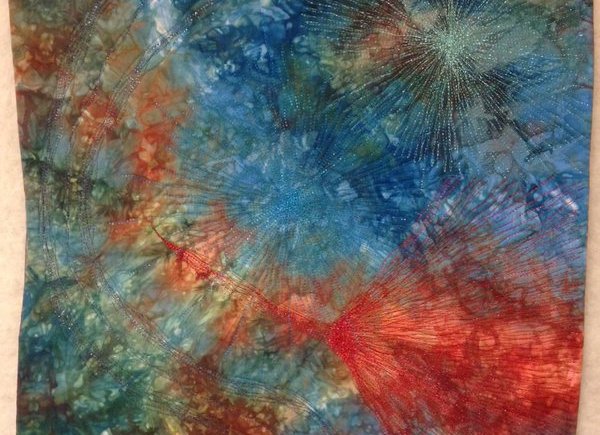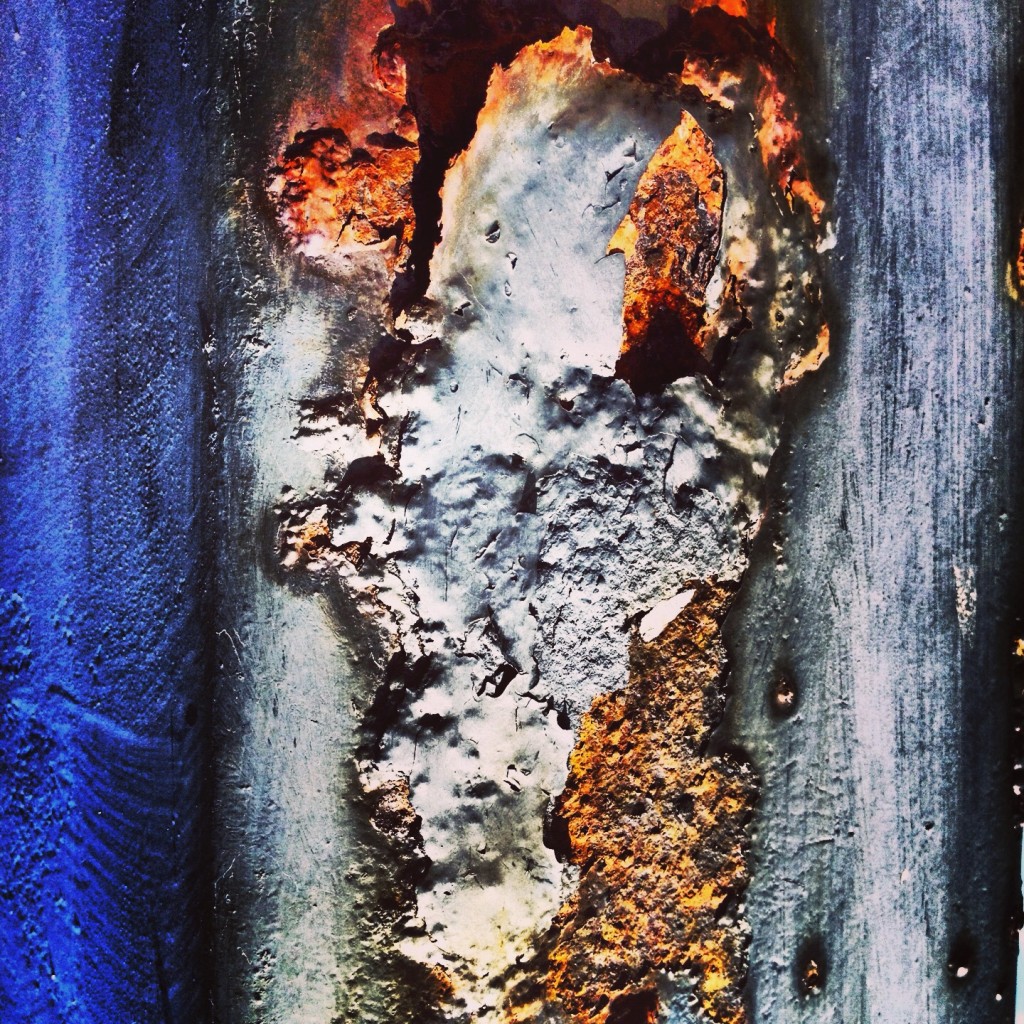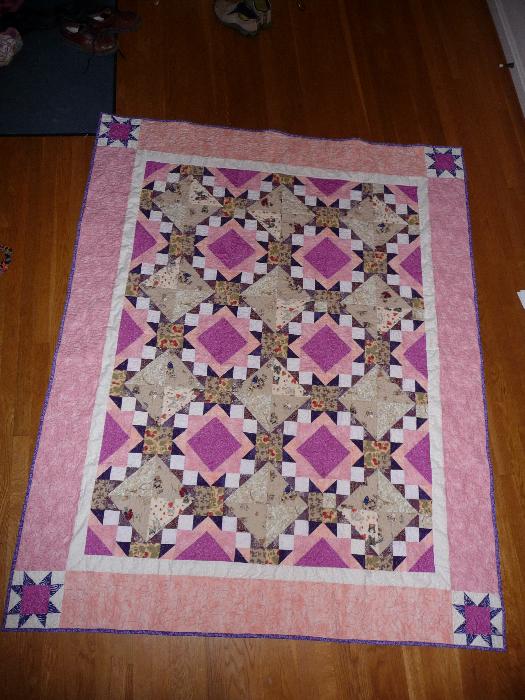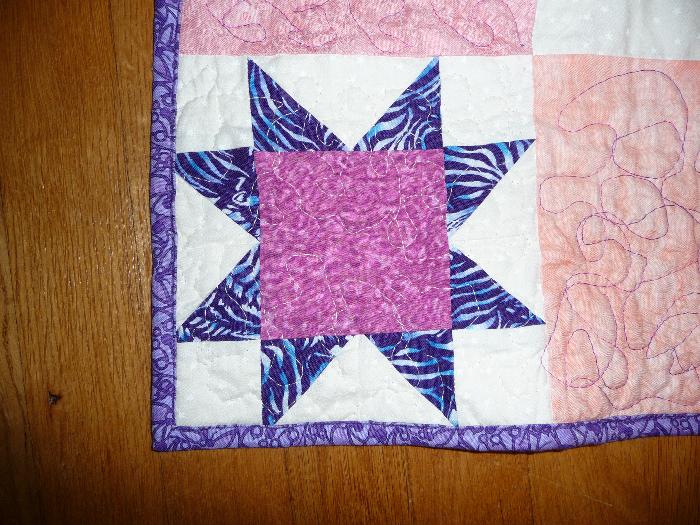I wrote this blog post for IAmSciart, which I hosted at the end of last year.
My daughter says I have six social lives — quilting, art, twitter, dancing, and singing friends (and then of course whatever my kids are up to). I tell you this by way of introduction. In my creative work especially, I have a finger in every pot and I’m happiest when some of them interact.
In 2015, I worked for most of the year on 8 panels that tell a story of evolution. I was inspired by a specific call for entry on the theme of Diaspora (the spreading of a population outwards). As soon as I saw it, my mind went immediately to evolution — from the Big Bang throughout all of history to the future. I could see populations exploding outwards.
Then came the execution. Some of them were easy and obvious.
The first panel, The Big Bang was probably the easiest. I had an idea and it was simple and elegant and it came out exactly as I’d imagined it. People look at it and immediately know it’s a big bang!

The second panel, Primordial Soup, is much more subtle. The viewer can see lots of little sparkles from crystals that represent some elements. I placed them, so they are closer together in the center and radiate outwards in a somewhat spiral shape. On top of them, I put a strand of DNA made out of wire and beads. Even inanimate objects spread outwards.
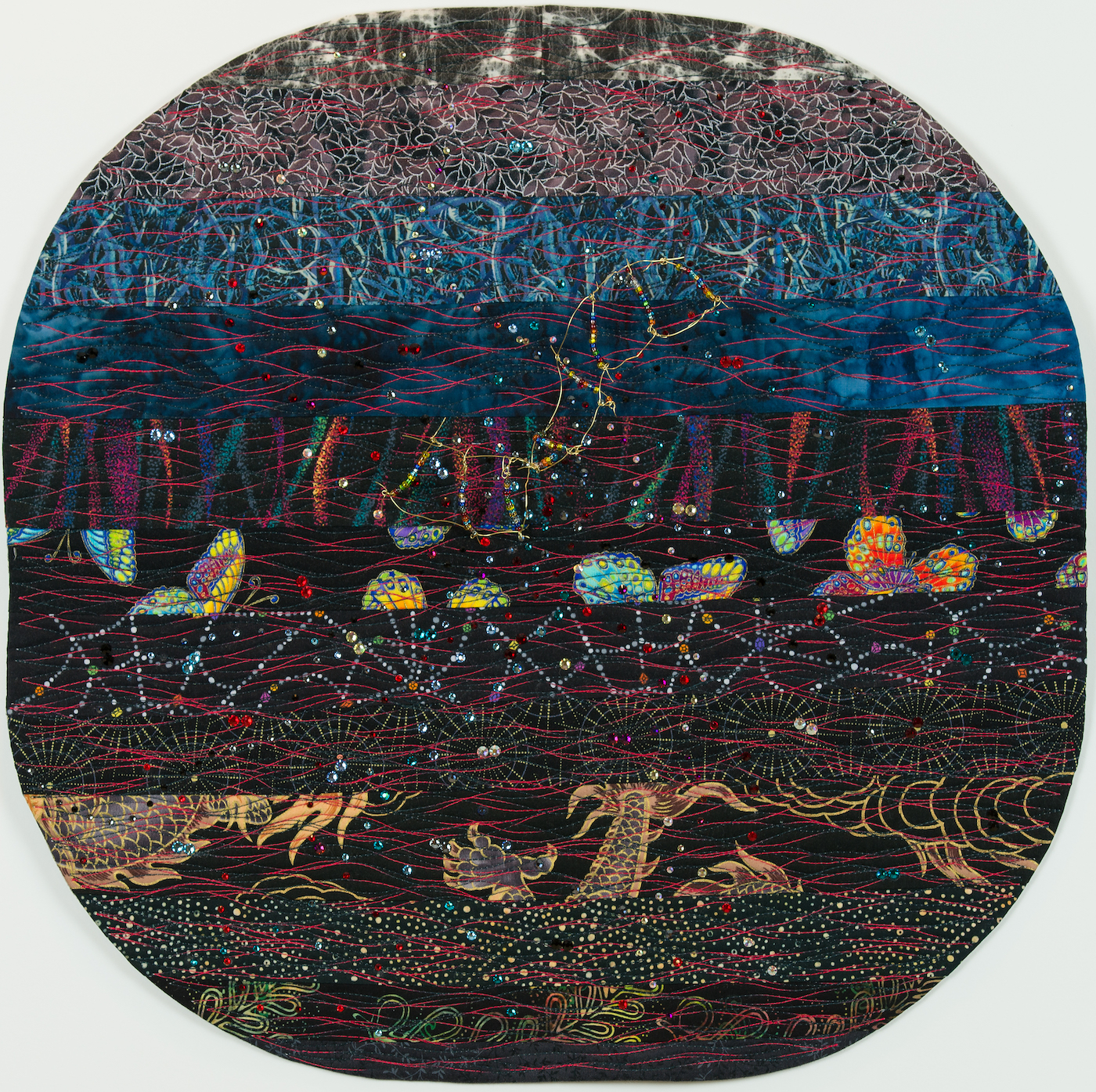
I worked on this project from March to October of 2015. I knew that trying to tell all of history was a huge undertaking and I figured the only way I could do it was to break it down into panels (or chapters, if you will). Initially I had thought there were going to be 7 panels, but I wasn’t set on that number, which was fortunate because later I realized I’d left something out.
I do not work in a vacuum. I’m always talking about what I’m working on, which was a good thing because Kim Gibson (a quilting friend) told me about black smokers. I went home and researched them and oh my god did I fall in love with them. Clearly this was a concept that I needed to illustrate in my timeline, so that’s how Black Smokers happened (scientists think it was the heat from hydrothermal vents that may have triggered early life). In this one, as in the panels following it until the last one, the expansion outward is from the bottom of the sea floor to the top rather than from a sort of bird’s eye view with a bull’s eye in the middle (if you’ll forgive the mixed metaphor).

I had the idea that the next panel would depict life growing slowly from the bottom of the ocean, gaining speed as it went, pushing at least one animal out of the ocean, but there was just no way I could make that work 2 years ago, so I had to scale back my ambitions. Instead, I just loaded the ocean as full as I could at the top with a few of the critters escaping the confines of the border.

After life forms in the ocean, I moved to land. (Apologies to the botanists — I focused on animal life rather than botanical or even smaller forms of life.) I had originally thought to put primates and dinosaurs on the same panel and was having a heck of a time trying to figure out how to make that work, so I went to the fabric store looking for help/inspiration/something-to-save-me. I ran into Kim (who works there), and she said “but primates didn’t live at the same as dinosaurs” at which point I kicked myself and said, “oh, right” and beat a hasty retreat. This simplified some issues, but complicated others. I realized I needed to make an 8th panel (which turned out to be #6). Luckily I had screwed something else up and so it was able to sneak in quite tidily (thank you sub-conscious).
Panel 5 is called Complexity because I wanted to convey this idea that evolution was producing more complex life forms and also because life had become more complicated, with more species vying for niches. I also had initially wanted there to be just outlines of dinosaurs, since they had gone extinct, but that didn’t work. Placing a dinosaur just on top of the shadow seemed to convey that idea much better. And the branching structure that goes through the quilt represents the idea of species evolving into different branches as well as DNA being part of that since there is stitching over the main trunk that is spiral shaped.
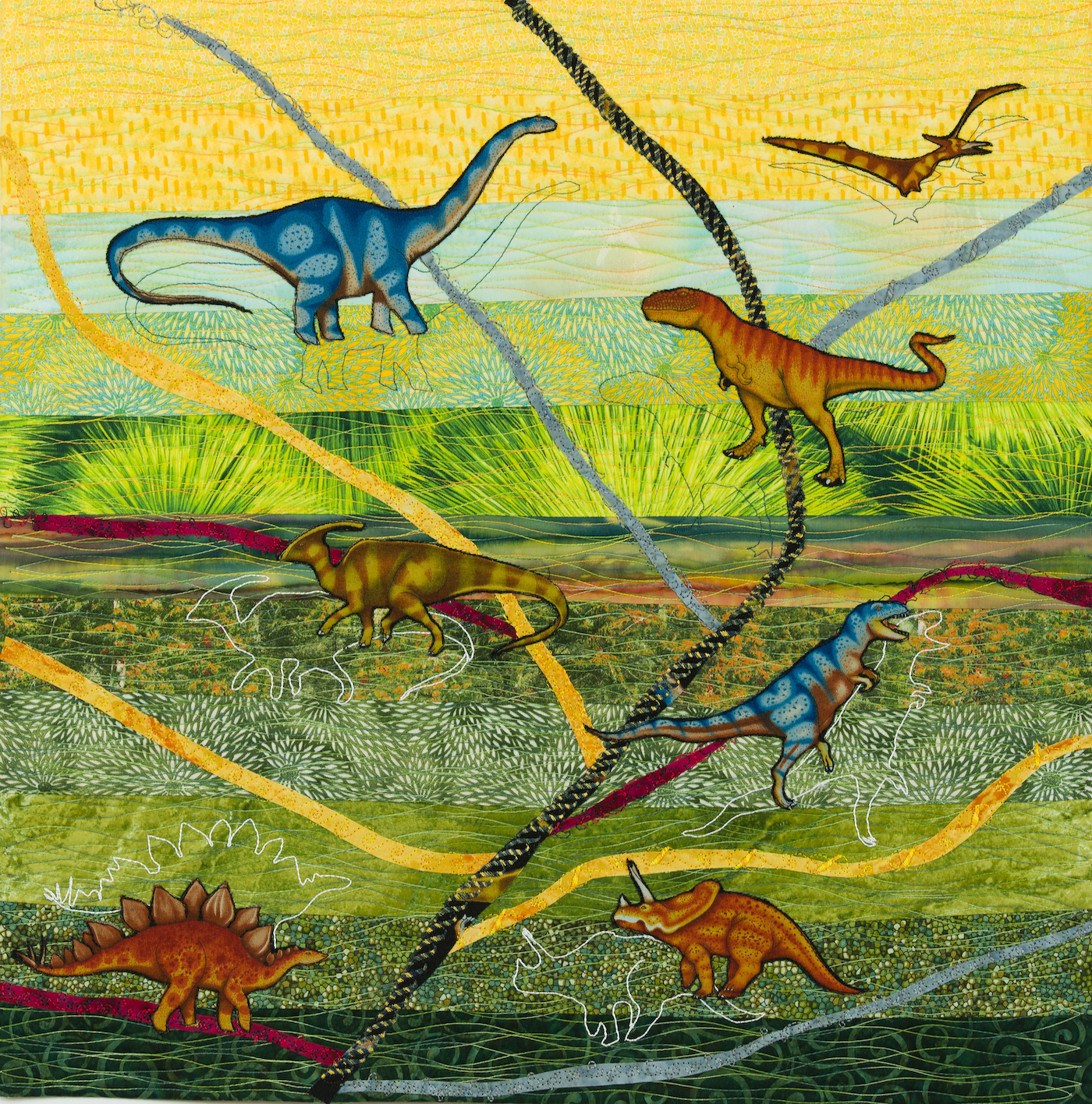
In Grandpas in the Trees, I was able to feature the primates on their own panel. I made the best stab I could at putting them in evolutionary order, with the oldest at the bottom. In order to do this, I consulted with my science friends on Twitter since I know nothing about primate evolution. This panel references a song about Darwin by Dillon Bustin that I learned at dance camp a few years previously (see lyrics at the end of the post). This is also the most 3d panel as I used little plastic figurines for the primates. It was impossible to find suitable primate fabric and I didn’t have the skills to make my own.
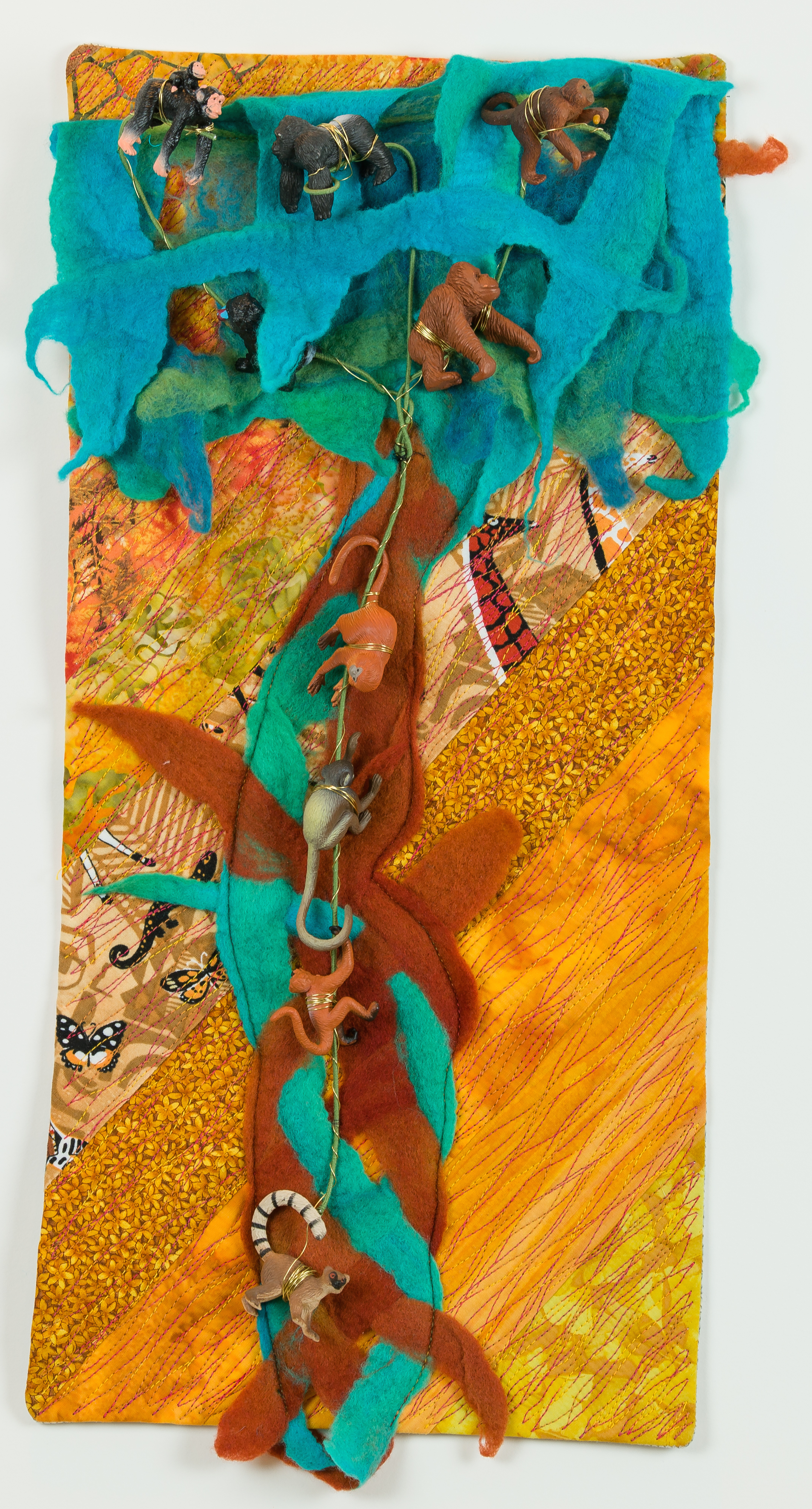
Scorched Earth brings us to the present. We’ve heated up our earth, used up many resources, and overpopulated it. We see some glimmering stars up above, in the sky. I wanted to portray population overgrowth in a similar way to the fish with there being fewer people at the bottom, but when I previewed that, people said it looked like 9/11, so that representation went out the window.
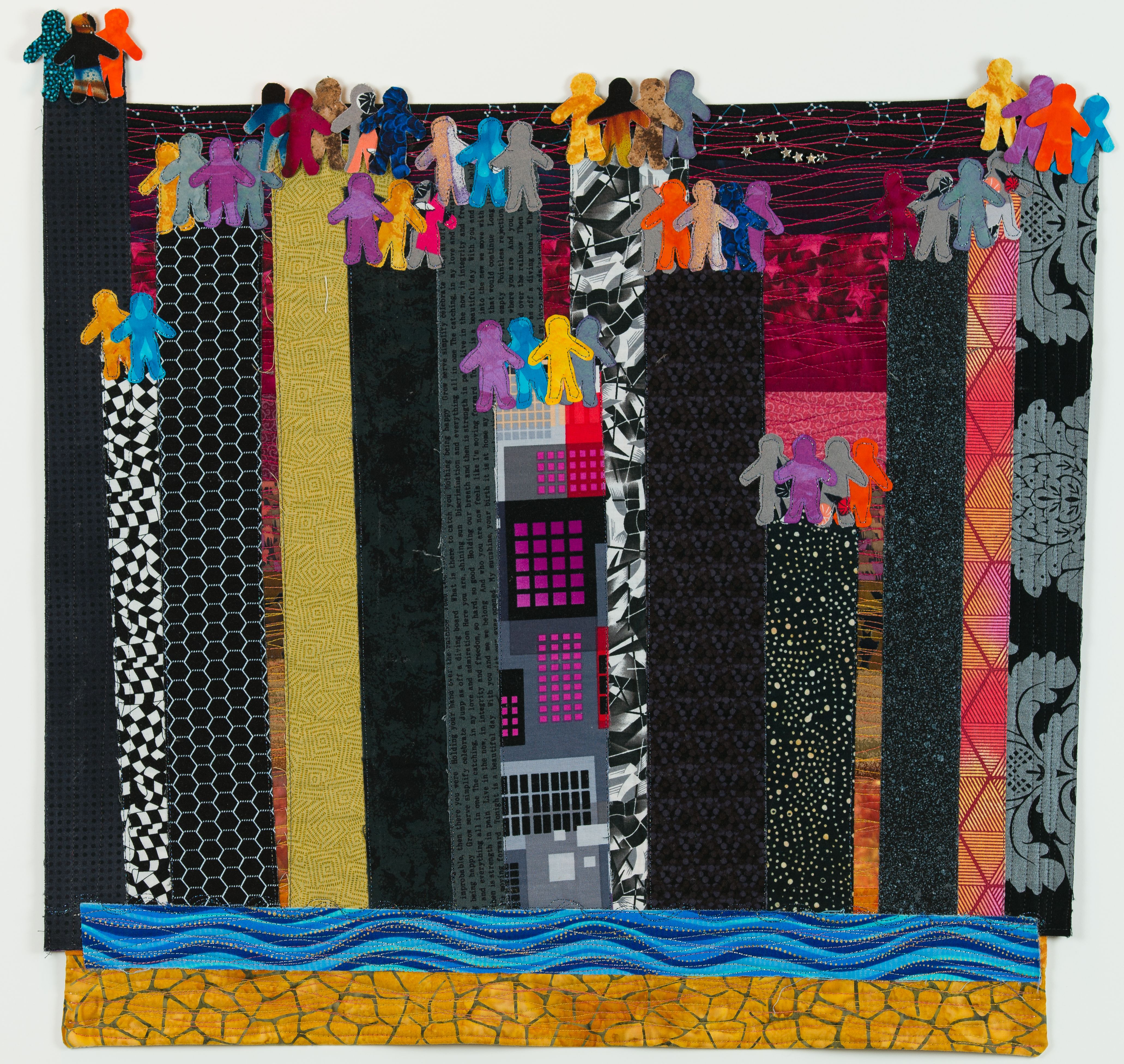
The last panel, Warping the Fabric of Space and Time, was made more than 6 months after I started. I had actually dyed the fabric shortly after starting the whole project and knew I wanted it to be the last panel. Someone suggested I quilt it in the same big bang starburst pattern, which I thought was a fabulous idea, but I didn’t go back and look at what I had done before. I quilted it much more densely and ended up with a wrinkled quilt. In the end, I love how it’s wrinkled and warped, but in the quilting world, a non-flat quilt is Not Good. Cutting the hole in the middle was supposed to flatten it, but that didn’t work. Instead, it opened up a space to hang the earth. Finally, I happen to know a rocket scientist and I checked with him that the trajectory I was depicting was one that made sense. It’s good to have science buddies.
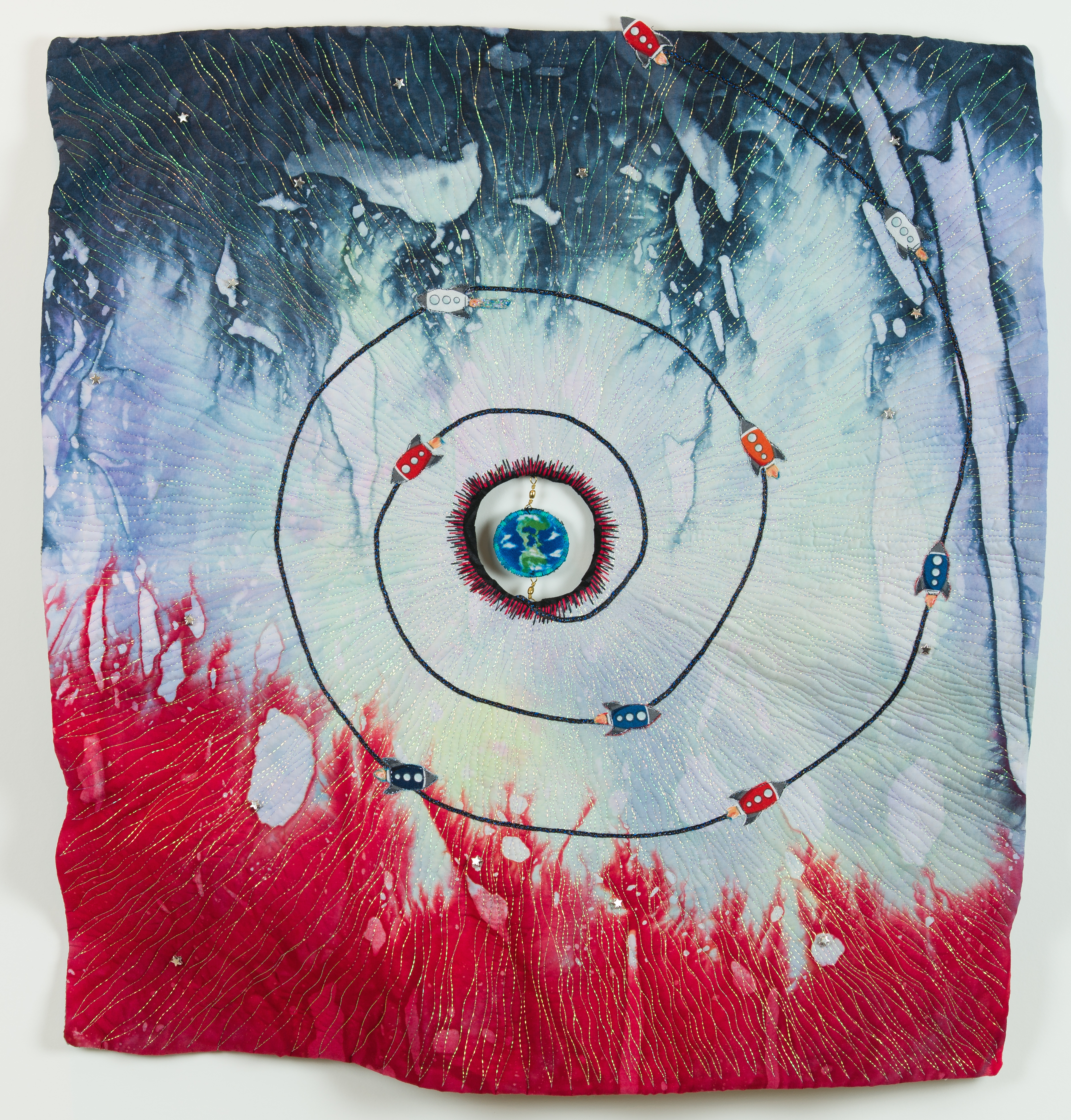
I think this needs another transition – maybe echo back to the first paragraph about the overlap between your different social circles and how they interact.
In the end, this project combined my interest in science, my passion for textile arts, and the social connections I have, much to my satisfaction. My whole life, I’ve always felt like an outsider — until I was encouraged to make art and then found other people who were also making science-themed art.
Dillon Bustin’s song about Darwin:
I am sailing on the Arafura Sea,
Where Charlie Darwin went before
Saw that every creature had a form of self protection,
Trying to adapt in the natural selection,
It seems that every species has an itch
To try to find itself a better niche.
(Chorus)
Oh, nobody stays where they should anymore,
Nobody is happy where they are.
Fish try to fly, birds try to swim,
Snakes leave the dry land and slip beyond the brim
And the crabs crawl ashore and look around,
Wanna dig a hole in the ground.
I am sailing on the Arafura Sea,
Where Charlie Darwin went before
I notice that the air is full of flying fihs,
To escape the tuna is their fondest wish,
But when did the first fish decide,
To spread his little fins and try to glide?
I am sailing on the Arafura Sea,
Where Charlie Darwin went before
The blue footed booby’s in a power dive,
Hit the sea so hard it’s a wonder they’re alive,
But I guess that the boobies know the best,
They’ve got a hidden airbag in their chest.
I am sailing on the Arafura Sea,
Where Charlie Darwin went before
Looking down I’m suspecting a mistake
Every wave is full of swimming snakes
And I must say it scares me half to death
To think a snake could learn to hold its breath.
I am sailing on the Arafura Sea,
Where Charlie Darwin went before
I do believe if he says it it is so,
I am descended from an ape long ago
But here I am a’sailing o’er the seas,
Pondering my grandpa in the trees.
WHO AM I? I AM SCIART.
Bef (e porter) @snowbringer tweeted:
The state of today:
*sees the art of all the other awesome peeps*
*looks at own work*
*creeps back into a dark corner to hide*
I replied:
I do this too. Then remind myself that comparison is killer. We are each on our own journey.
https://twitter.com/artcollisions/status/867432073547657216
